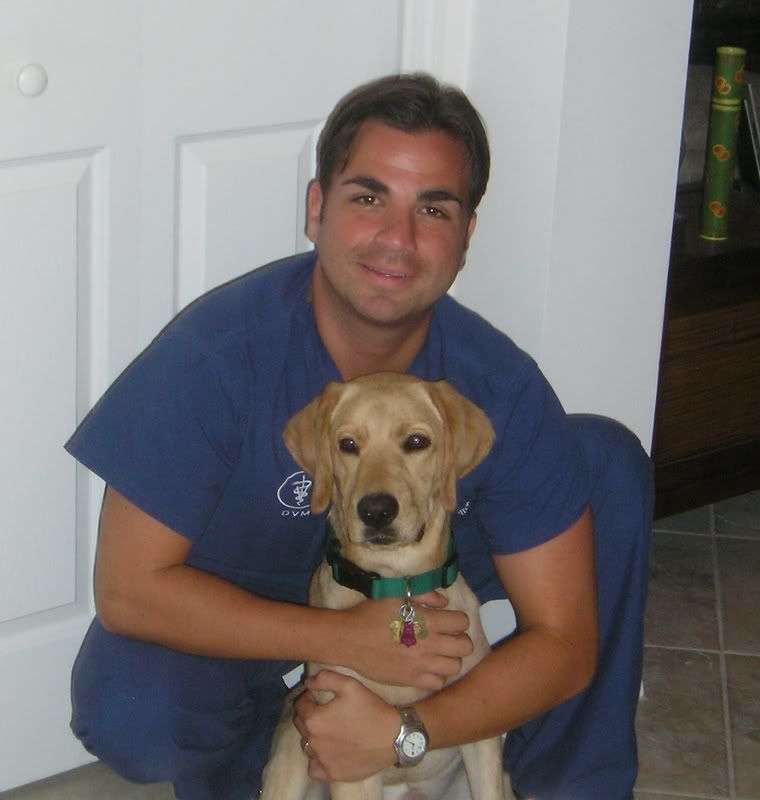This is a question I get at least once, some times several times a day in daily practice, following my recommendation for a senior age patient to undergo a necessary procedure that requires anesthesia. Whether it is a severely needed dental prophylaxis, tumor removal, or castration for an enlarged prostate, pet owners tend to have serious trepidation toward the administration of anesthesia in canine and feline patients over the age of 7. They generally seem to fear anesthesia with their pets more so than for human loved ones or even for themselves.
I find it both curious and frustrating that people can have no qualms about 78 year old Grandma going under for a hip replacement, but they are terrified to let Fluffy go under to have desperately needed dental work for teeth that are causing serious pain, infection, immune suppression, and could potentially lead to life threatening heart and kidney infection. The result of this fear of anesthesia is that many patients whose quality of life would benefit greatly from anesthetic procedures, live on in pain, discomfort, or other diminished quality, because their owners fear that the greater danger beyond everything is the anesthesia itself.
Please let me assure you that anesthesia is not the enemy. Anesthesia technology, monitoring equipment, and pharmacological and other life support measures in veterinary medicine, rival that of its human counterpart. Anesthesia is statistically very safe, with incidence of anesthetic death very low. Dental disease, enlarged prostates, rapidly growing tumors, orthopedic injuries, and a host of other ailments that can be treated with the aid of anesthesia, are real the enemy.
To be fair, however, not all veterinarians are created equal, and not all may be necessarily keeping up with the most current anesthesia protocols, induction agents, and monitoring equipment. While the majority of veterinarians make staying current and maintaining the utmost safety for the patient a top priority, vets like the former are out there - I know, I have worked with a few of them in the past. Therefore, in order for you to proceed with that procedure Fluffy so desperately needs with the least possible risk of anesthetic incident, I have compiled a list points you should address with your vet prior to anesthesia:
1.) Even if healthy, any patient age 5 years or older should have a routine blood panel run prior to anesthesia, to include at a minimum, blood chemistry and complete blood count. This enables the veterinarian to rule out any increased anesthetic risk due to organ compromise or anemia.
2.) Preanesthetic pain/anxiety injections are good medicine. Pain and/or anxiety can lead to stress hormone induced cardiac arrhythmias and other anesthesia complications. Reducing pain and anxiety is not just the right thing to do for the comfort of the patient, but it is also good medicine. A good preanesthetic injection protocol should include an opioid pain reliever (I like morphine, butorphanol, or buprenorphine) and a neuroleptic anxiety reducer (I like acepromazine or metetomidine).
3.) Safe induction agents (intravenous injections that get the patient into a sufficient plane of anesthesia to insert the breathing tube) are an important aspect for safe anesthesia. My induction agent of choice is propofol, a drug that is metabolized and eliminated easily and efficiently by the body, leading to the smoothest possible recovery.
4.) The anesthetic gasses halothane and methoxyflurane are partially metabolized by the liver and therefore associated with a higher degree of toxicity. Thus, these should be avoided. Isoflurane for use in both dogs and cats; and sevoflurane for cats are much safer and better choices for gas maintenance of anesthesia.
5.) At a minimum, a patient should be hooked up to a pulse oximeter to monitor blood oxygen saturation level and audible heart rate. However, the more monitoring equipment the patient is on the better. In addition to pulse oximetry, EKG, doppler blood pressure monitoring in addition are invaluable tools to monitor the cardiac and circulatory stability.
While it is impossible to guarantee that an anesthetic incident will not occur, taking the proper precautions reduces the risk considerably. Administered correctly, anesthesia is a far safer option than letting a patient live with an injury, ailment, or illness that can be treated or even eliminated with the help of anesthesia.
Wednesday, January 2, 2008
Subscribe to:
Post Comments (Atom)




1 comment:
I have infer from a insufficient of the articles on your website now, and I really like your style of blogging. I added it to my favorites entanglement stage list and disposition be checking back soon. Please report register out of order my put as approvingly and let me be acquainted with what you think. Thanks.
Post a Comment